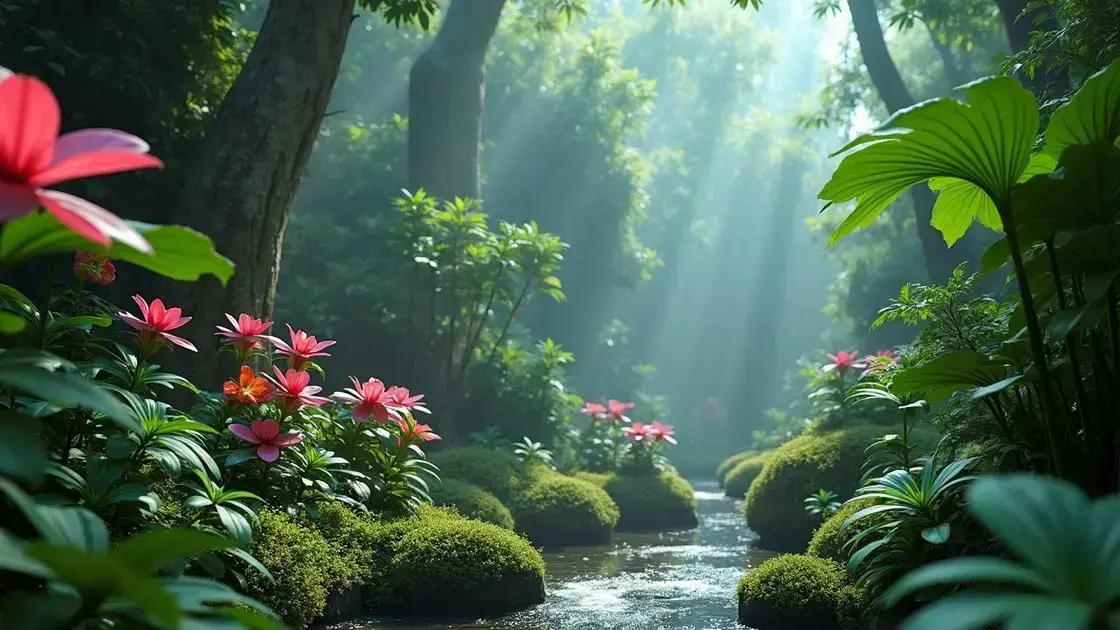How to Care for a Fittonia Plant: 5 Essential Tips for Thriving Growth
How to care for a fittonia plant can often feel overwhelming, especially if you’re just starting your indoor gardening journey. It’s essential to grasp the specific needs of this vibrant tropical gem, which thrives with the right conditions. Let’s delve into essential tips that will ensure your fittonia remains colorful and healthy, thriving in your home or office.
Table of Contents
ToggleUnderstanding fittonia plant growth requirements
How to care for a fittonia plant effectively requires an understanding of its growth conditions. Fittonias, commonly known as nerve plants, thrive in specific environments that mimic their native tropical habitats. Here are the key aspects to consider:
Optimal temperature and humidity levels
- Temperature: Fittonias prefer temperatures between 65°F to 80°F (18°C to 27°C). Sudden temperature changes can be detrimental.
- Humidity: These plants thrive in high humidity. Average indoor humidity often isn’t sufficient, so consider using a humidity tray or misting the plant regularly.
Essential watering practices
When learning how to care for a fittonia plant, watering is vital. Here’s how:
- Check soil moisture with your finger. Water only when the top inch feels dry.
- Use room temperature water to avoid shocking the plant.
- Avoid overwatering to prevent root rot.
Light conditions for healthy growth
Fittonias flourish under proper lighting conditions:
- Indirect sunlight: Bright but indirect light is ideal; too much direct sunlight can scorch the leaves.
- Low-light tolerance: While they can survive in low light, their growth may slow down and colors may fade.
Soil requirements and nutrients
Choosing the right soil is crucial for fittonia health. Follow these guidelines:
- Use well-draining potting soil, such as a mixture appropriate for houseplants.
- Consider adding perlite or vermiculite to improve drainage.
- Fertilize once a month during the growing season with a balanced, water-soluble fertilizer.
By understanding these vital components of how to care for a fittonia plant, you can create a flourishing environment for your nerve plant. For further insights on enhancing your indoor space, consider exploring indoor gardening techniques.
Essential watering tips for fittonia health

How to care for a fittonia plant involves understanding the importance of proper watering techniques. These plants require specific moisture levels, making effective watering crucial for their overall health. Below are essential tips to ensure your fittonia thrives:
Understanding fittonia’s moisture needs
- Fittonias enjoy consistently moist soil but never soggy conditions.
- Failure to maintain adequate moisture may lead to drooping leaves or browning tips.
When and how to water fittonia
Follow these steps for optimal watering:
- Check the top inch of soil: Water when it feels dry to the touch.
- Use room temperature water to avoid shocking the plant.
- Water thoroughly, ensuring the excess drains out of the pot.
Signs of overwatering and underwatering
Recognizing the signs is key:
- Overwatering: Yellowing leaves, root rot, or mildew can occur.
- Underwatering: Wilting leaves, crispy edges, and slow growth are common signs.
Best watering practices for fittonia health
Following best practices can ensure your plant’s health:
- Consider using distilled or rainwater for the best results.
- Avoid letting the plant sit in water to prevent root rot.
- During winter months, reduce watering frequency as plants use less water.
If you want to immerse yourself deeper into plant care, consider exploring indoor gardening techniques for better results.
Light and soil conditions for flourishing fittonia
How to care for a fittonia plant successfully necessitates understanding its light and soil requirements. Proper conditions will promote vibrant growth and health in your fittonia. Below, we outline the key aspects to consider:
Optimal light conditions for fittonia
- Indirect sunlight is ideal for fittonias; they prefer bright but filtered light.
- Avoid direct sunlight as it can scorch the leaves, causing them to lose their vibrant colors.
- In low-light environments, fittonias can survive, but expect slower growth and less pronounced colors.
Signs of insufficient or excessive light
Recognizing light issues can keep your fittonia thriving:
- Insufficient light: Leaves may become leggy, fading in color.
- Excessive light: Leaves can appear scorched with brown edges.
Choosing the right soil for fittonia
When considering how to care for a fittonia plant, selecting proper soil is crucial:
- Use a well-draining potting mix, such as a peat-based blend.
- Adding perlite or coarse sand can enhance drainage.
- Avoid heavy, clay-based soils that retain too much moisture, which can lead to root rot.
Fertilizing considerations
Feed your fittonia to enhance its health:
- Use a diluted water-soluble fertilizer during the growing season.
- Fertilizing every 4-6 weeks during spring and summer promotes growth.
For more in-depth advice, consider exploring indoor gardening techniques that can elevate your plant care knowledge.
In conclusion
Caring for a fittonia plant is a rewarding experience that can brighten any indoor space. By understanding its specific needs for watering, light, and soil conditions, you can ensure your fittonia thrives and showcases its beautiful foliage. Remember to monitor moisture levels, provide the right light exposure, and use well-draining soil. For further inspiration and techniques, check out these tips on enhancing your indoor garden.

